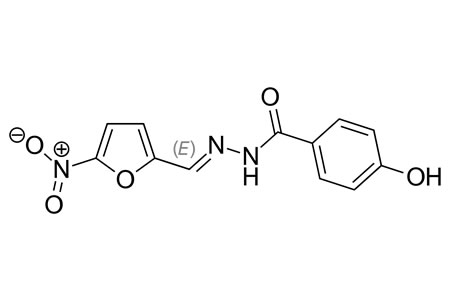An antibiotic patented in 1966 that has been widely used to treat bacterial infections in humans, especially those that cause colitis and diarrhoea, could have a new and very different use: The treatment of malignant melanoma, one of the deadliest forms of skin cancer.
The drug is nifuroxazide, a 5-nitrofuran antibiotic. Researchers at the MRC Institute of Genetics and Molecular Medicine at the University of Edinburgh tested the drug on melanoma cells in mice and tissue removed from tumors in humans and demonstrated that the drug was effective at selectively killing tumor cells. The researchers are hopeful that the drug could be used to complement existing therapies for skin cancer.
Previous research has shown that 5-nitrofuran antibiotics have anti-cancer activity against some forms of cancer, with the antibiotics nifurtimox and nifuroxazide shown to have potential as treatments for neuroblastoma, multiple myeloma, and colon and breast cancer. Nifurtimox is currently being used in a phase II clinical trial to treat children with neuroblastoma or medulloblastoma.
The researchers note that when used to treat infections diseases, selectivity of the drugs is mediated by bio-activation by bacterial- or parasite-specific nitroreductases, but the anti-cancer activity is not well understood which has limited potential for further uses of the drugs.
The researchers discovered that the drug nifurtimox is activated by aldehyde dehydrogenase 2 (ALDH2), whereas nifuroxazide is activated ALDH1. ALDH enzymes metabolize toxic aldehydes and many cancer cells produce high levels of these enzymes. A drug that is activated by ALDH enzymes would only be toxic to cells that are producing ALDH1.
There is considerable heterogeneity within tumors and some cells are more dangerous than others. In the case of melanoma, cells that produce higher levels of ALDH1 are more dangerous. For this reason, several studies are currently being conducted on compounds that can block the activity of ALDH1.
To test the effectiveness of nifuroxazide, the team implanted tissue from human melanomas in mice and used nifuroxazide therapy to kill the cells that were producing high levels of ALDH1. The researchers report that the drug was effective at selectively killing those cells and did not appear to have any toxic effects elsewhere in the body.
Current treatments for malignant melanoma include the use of BRAF and MEK inhibitors, although resistance to these drugs is often developed. The researchers note that the cells that develop resistance to these inhibitors have high levels of ALDH1. The researchers demonstrated this using cancer cell lines in the lab that had been treated with BRAF and MEK inhibitors, which resulted in an increase in the numbers of cells that had high levels of ALDH1, and that those cells were killed by nifuroxazide therapy.
Nifuroxazide could therefore potentially be used alongside those treatments and could help to combat the problem of resistance.
The good news is the drug has already been approved for use in humans, although it must now be established whether it is safe to use as a treatment for cancer and whether the doses that are required to get enough of the drug into the cancer cells will still be safe.
The study is detailed in the paper – ALDH1 bio-activates nifuroxazide to eradicate ALDH(High) melanoma-initiating cells – which was recently published in the journal Cell Chemical Biology. DOI: 10.1016/j.chembiol.2018.09.005
